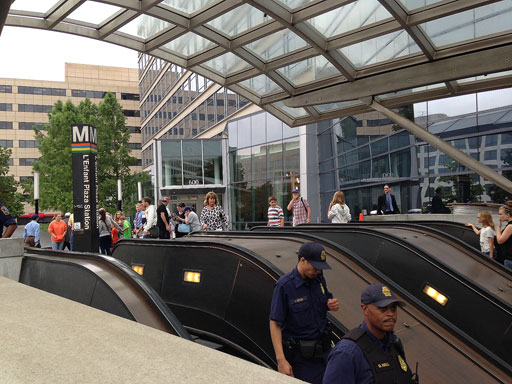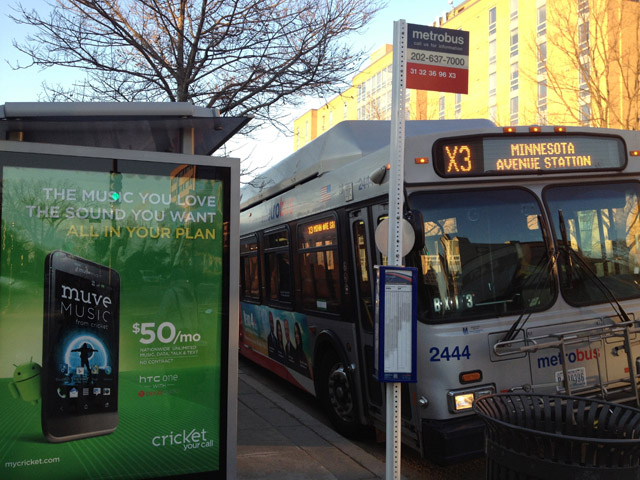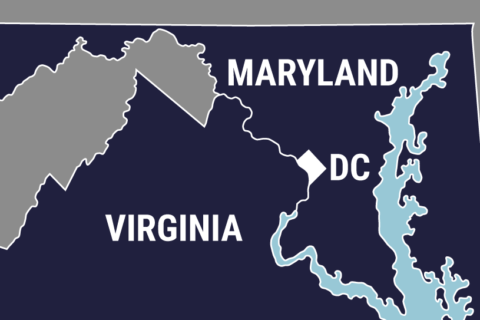WASHINGTON — A wide expansion of free rail and bus rides for D.C. students could cut down on the millions of times each year Metro estimates students simply walk around the fare gates, which can cut into Metro funding through federal formulas.
Metro estimates, obtained by WTOP, project that students will have simply walked through emergency exit gates rather than tapping a SmarTrip or DC One card 3.8 million times this school year alone.
It is part of wider issues tied to fare evasion, since disputes over fares on buses are a leading contributor to attacks on bus operators.
DC One cards are issued to students and can be registered at no cost to public and charter school students or their families to cover unlimited free rides on the Metrorail system, as well as free bus rides in the morning and afternoon on school days. Private school students who both live in and go to school in D.C. can obtain DC One cards that can be used for the free bus rides.
Under changes authorized by the Metro Board’s Finance Committee Thursday, the program for the 2016-2017 school year is expected to eliminate the registration requirement and expand the free trips around the clock. The changes would automatically give free rides between Aug. 8, 2016 and Jun. 14, 2017 to an estimated 50,000 students.
“I think this is a very good program … but I think we have to understand, what is the financial implications of the program and how it works,” said Maryland Metro Board member Michael Goldman.
Metro Chief Financial Officer Dennis Anosike projects the final deal with the District government will be “revenue neutral” compared to this year.
D.C. is paying Metro about $18.6 million this year for student transportation passes this school year, the first year with a free rail pass for students.
Despite the free rides, when Metro had a contractor check key stations, the workers found many students still going around the fare gates. Metro acknowledges that one reason for “fare evasion” (even though the students are not directly paying, the D.C. government would be) is issues with the DC One cards when students try to take the bus outside of the allowed hours for free trips. But Metro focuses more on other issues, such as lax enforcement at times and the need for more education about the free rides and expectations for use of the system.
Only 10,000 or so of the approximately 50,000 eligible public and charter school students have registered their DC One cards this year for free rides.
“At certain high-use rail stations, such as Tenleytown and Anacostia, usage of the emergency gate was observed as high as three to four times the rate of appropriate usage of the fare gate, as recorded by the fare collection system,” a financial document prepared by Metro staff that was dated June 6 indicated.
Using that information, Metro estimated the 3.8 million trips taken by students that were not recorded, which suggests that the total number of Metrorail and bus trips taken by students this year has risen eight percent with the new rail pass available.
D.C. Metro Board member Tom Bulger said Thursday that if the expansion of the program goes well, even more students will ride Metro, or at least be recorded as riding. That could contribute to a small increase in funding from a federal formula if students use their cards.
The changes, the financial analysis document show, are “expected to more than double the number of students with DC-funded access to mass transit while actual daily ridership is not expected to materially increase when fare evasion estimates are included.”
Goldman suggests Metro needs to look at the impact of the program “on crowding and platforms and disruptive behavior.”
While most student trips in the morning do overlap with rush hour between 7 a.m. and 9 a.m., Metro estimates most afternoon trips fall between 3 p.m. and 5 p.m., before many commuters get on the trains.
Metro Transit Police have moved to slightly increase patrols, and there have been arrests in a number of high-profile incidents that concerned some riders.
Under the outlines of a deal between D.C. and Metro that would be approved this summer, D.C. would pay a flat rate for each student with an active DC One card. This year, D.C. has been paying the full $1.75 bus fare for each bus trip, a flat rate for each student with the rail pass, and 65 cents per rail trip those students take. Metro projects the cost to the District government would remain similar to this year, around $18 million to $19 million.
The new model of giving students passes that are ready to use without any further complications is similar to Metro’s university pass pilot program that will be tested at American University this fall. The college students will get a separate card that can be used immediately, rather than requiring individual registration.
There are some similar programs for students on buses in Montgomery and Fairfax counties.
In Fairfax County, Fairfax Connector offers free rides to middle school and high school students who meet the requirements for a student bus pass distributed by their schools.
In Montgomery County, anyone 18 and under (or still in high school), who is a Montgomery County resident can ride any RideOn bus and certain Metrobus routes free with a Youth Cruiser SmarTrip card. That card, like the DC One card in the District, requires proof of residency. Since it is a SmarTrip card, it also costs $2.








